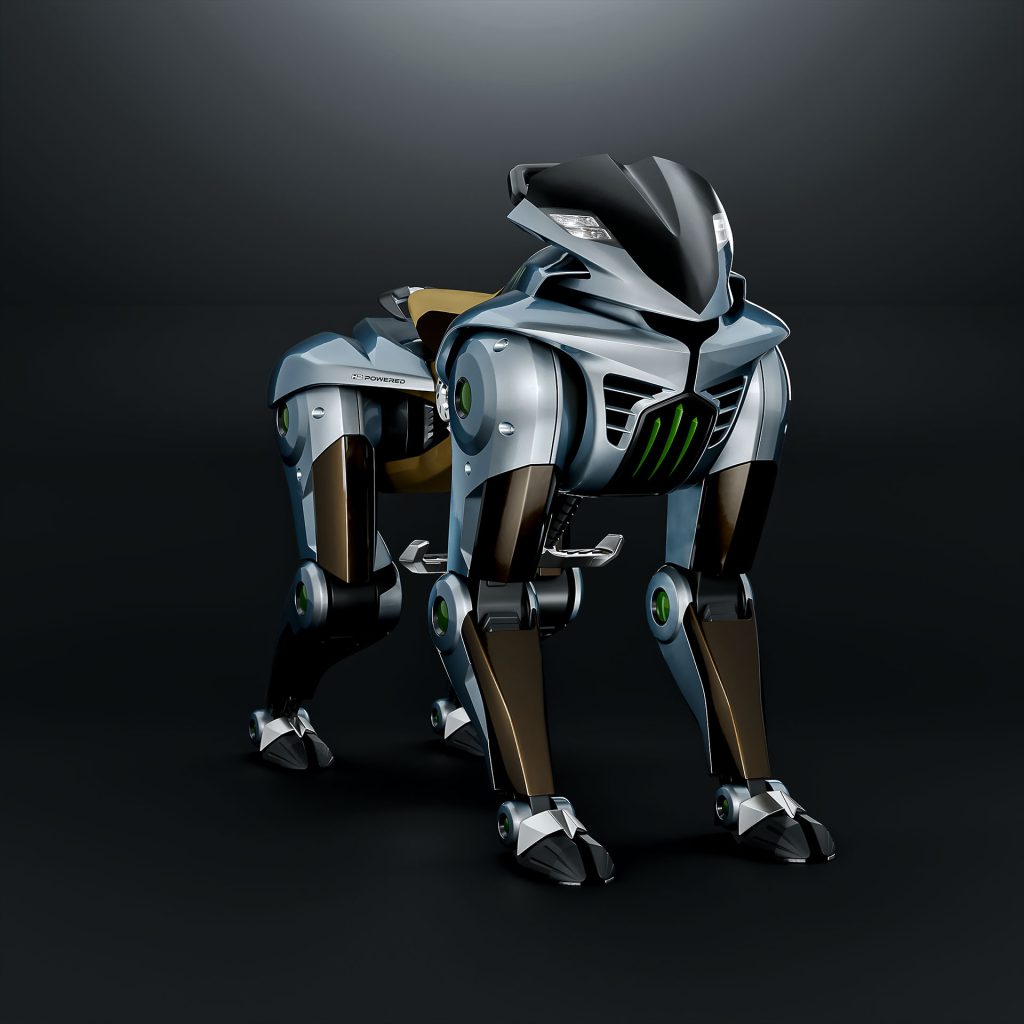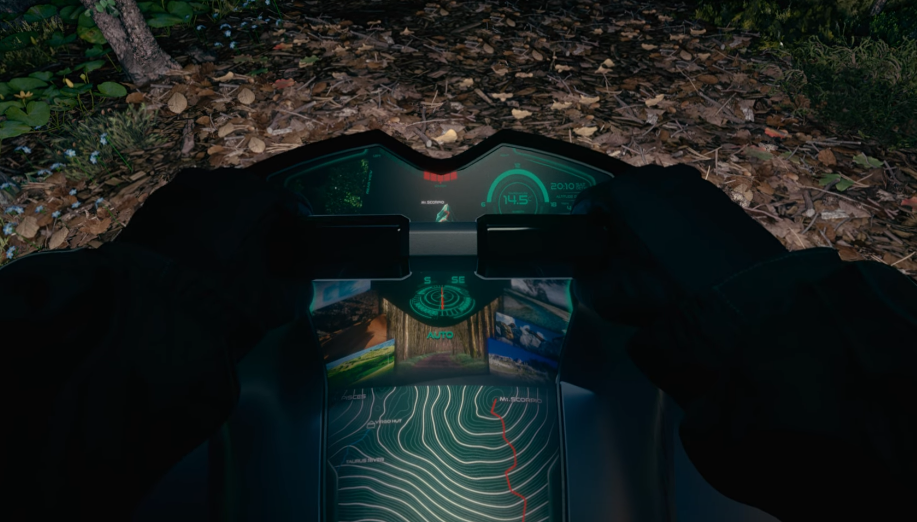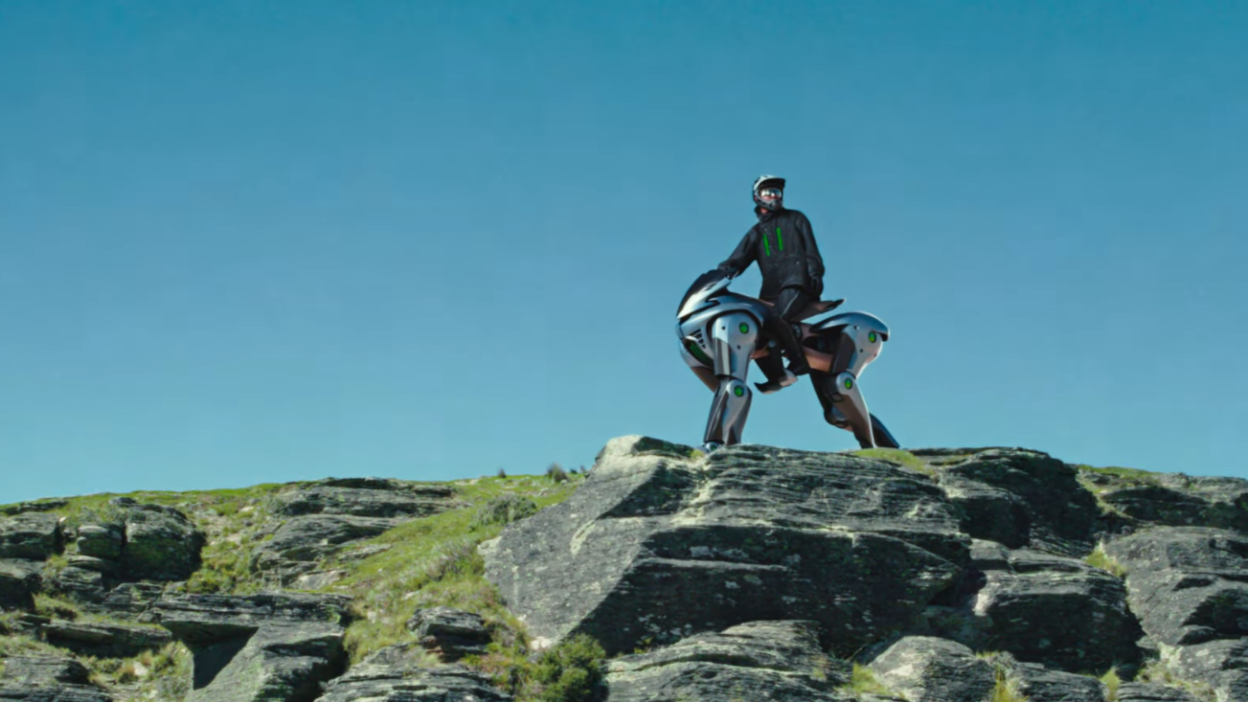Introduction
The transportation world was collectively stunned when Kawasaki unveiled the CORLEO at the Osaka-Kansai Expo 2025. Looking like something straight out of science fiction, this quadruped robotic vehicle with four mechanical legs instead of wheels immediately divided opinion. Some hailed it as the future of personal mobility, while others dismissed it as an impractical concept that would never see real-world application.
But what exactly is the Kawasaki CORLEO? Unlike traditional motorcycles or ATVs, the Kawasaki CORLEO is a hydrogen-powered robotic mobility platform that allows riders to traverse terrains previously considered impassable to vehicles. With its horse-like mechanical legs and zero-emission hydrogen engine, it represents Kawasaki’s bold vision for how humans might move through challenging environments in a carbon-neutral future.
Today, we’re diving deep into this controversial machine to separate genuine innovation from marketing hype. Is the Kawasaki CORLEO truly the groundbreaking mobility solution Kawasaki claims it to be, or is it simply an attention-grabbing concept that’s unlikely to materialize into a practical vehicle? Whether you’re a technology enthusiast, environmental advocate, or simply curious about the future of transportation, this analysis will help you understand what makes the Kawasaki CORLEO significant—and what challenges it faces before potentially hitting the market around 2050.

Understanding the Kawasaki CORLEO’s Revolutionary Design
1. The Quadruped Robotic System
At the heart of what makes the Kawasaki CORLEO revolutionary is its quadruped design—four independent robotic legs that mimic the movement capabilities of a horse while incorporating advanced robotic intelligence. Unlike traditional off-road vehicles that remain limited by wheeled or tracked designs, the Kawasaki CORLEO can literally step over obstacles rather than attempting to roll over them.
Each leg operates independently, allowing the vehicle to walk, trot, and even jump over obstacles. The rear leg unit can swing up and down separately from the front unit, effectively absorbing shocks during movement across uneven terrain. This design allows riders to maintain a comfortable posture even when climbing steps or navigating difficult terrain, as they can keep their gaze forward to monitor conditions ahead rather than looking upward.
Perhaps most impressive are the specialized “hooves” at the end of each leg. These feature a left-right divided structure made from rubber, specifically designed to absorb surface irregularities while providing superior grip. This enables the Kawasaki CORLEO to adapt to diverse environments including grasslands, rocky areas, and rubble fields without requiring established paths or roads.
The streamlined body, constructed from metal and carbon materials, maintains a motorcycle-inspired aesthetic despite its radical departure from conventional vehicle design. A head-like shield positioned at the front integrates lighting systems to ensure visibility in various conditions.
Is this truly groundbreaking? Absolutely. While robotic quadrupeds have existed in research environments for years, the Kawasaki CORLEO represents the first serious attempt to develop a rideable quadruped vehicle for consumer use. This approach to all-terrain mobility fundamentally redefines what constitutes “accessible terrain” and could open up possibilities for exploration in areas previously reachable only by foot.
2. Hydrogen Power System
The Kawasaki CORLEO operates on a 150cc hydrogen internal combustion engine rather than batteries or traditional fossil fuels. This engine generates electricity for the drive units installed in each leg, producing only water vapor as emission—a truly zero-carbon approach that aligns with global decarbonization goals and Japan’s broader Green Growth Strategy targeting net-zero emissions by mid-century.
The hydrogen is supplied from a canister mounted at the rear of the vehicle, potentially offering advantages over battery-powered systems in terms of range and refueling time. By utilizing hydrogen combustion technology rather than fuel cells, the Kawasaki CORLEO represents an interesting alternative approach to clean energy application in personal mobility.
This power system demonstrates Kawasaki’s commitment to exploring sustainable transportation solutions while addressing the limitations of battery-powered vehicles. However, it also highlights one of the Kawasaki CORLEO’s biggest practical challenges: the current scarcity of hydrogen refueling infrastructure. While Japan has ambitious plans to establish approximately 1,000 hydrogen stations by 2030, global hydrogen infrastructure remains limited, potentially constraining the vehicle’s practical utility outside of specific regions.
The hydrogen power system represents a genuine innovation in robotic vehicle design, as most current robotic platforms rely on batteries with limited range. Whether this approach proves more practical than battery power will depend largely on how hydrogen infrastructure develops globally over the coming decades.

3. Revolutionary Control Interface
What truly distinguishes the Kawasaki CORLEO from both traditional vehicles and other robotic systems is its intuitive control interface. Rather than using conventional buttons, levers, joysticks, or other mechanical controls, the machine responds directly to the rider’s weight shifts detected through steps and handlebars.
This creates what Kawasaki describes as a “reassuring sense of unity between human and machine.” By changing the length of the stirrup, riders can maintain optimal posture while controlling the vehicle through natural body movements—similar to horseback riding but with advanced technology mediating the experience.
The Kawasaki CORLEO is equipped with an advanced instrument panel displaying critical information including hydrogen levels, route guidance to destinations, center of gravity position, and other operational data. For nighttime navigation, the system projects markers onto the terrain ahead, illuminating the optimal path forward—a feature that significantly enhances safety and usability in low-light conditions.
This approach to control represents a significant breakthrough in human-robot interaction. By eliminating traditional controls and responding directly to body movements, the Kawasaki CORLEO may prove more intuitive for new riders to master compared to conventional vehicles with complex control systems. This aligns with broader trends in robotics toward creating machines that can interpret and respond appropriately to human intent without requiring specialized training or explicit commands.
Is this control system groundbreaking or gimmicky? The concept shows genuine innovation in human-machine interfaces, potentially reducing cognitive load and increasing accessibility. However, questions remain about precision control in emergency situations, where instinctive reactions might not translate to optimal vehicle responses. Real-world testing would be necessary to determine whether this control system truly represents an advancement or merely an interesting experiment.
4. Advanced Navigation and Information Systems
The Kawasaki CORLEO features sophisticated navigation and information systems designed to enhance the riding experience while ensuring safety in challenging environments. The instrument panel provides crucial operational data including hydrogen levels and center of gravity position, helping riders maintain optimal balance and awareness of vehicle status.
Route guidance capabilities suggest integration with mapping systems to assist in navigation to specific destinations, particularly in off-road environments where traditional GPS navigation might offer limited assistance. The system’s ability to project markers onto the terrain ahead represents an innovative application of augmented reality principles to outdoor navigation.
This feature could prove particularly valuable in low-visibility conditions or when navigating complex terrain where identifying the optimal path might be challenging. The integration of these technologies demonstrates how advanced computing and sensing capabilities can enhance mobility experiences, providing riders with information and assistance without diminishing the sense of adventure and autonomy.
While not entirely unprecedented—augmented reality navigation exists in various forms already—the Kawasaki CORLEO’s implementation specifically designed for off-road, all-terrain navigation represents a thoughtful application of existing technology to a new context. The projection of path markers directly onto terrain rather than through a headset or screen is particularly innovative for outdoor navigation applications.
5. Environmental Considerations and Sustainability
The Kawasaki CORLEO’s zero-emission hydrogen power system produces only water vapor as exhaust, potentially offering environmental advantages over both conventional fossil-fuel vehicles and even battery-electric alternatives in certain scenarios. The vehicle’s ability to traverse terrain without requiring developed roads or trails could also reduce environmental impact compared to traditional infrastructure development in sensitive areas.
However, a comprehensive environmental assessment would need to consider the full lifecycle impacts, including hydrogen production methods, materials used in manufacturing, and end-of-life considerations. If hydrogen is produced using renewable energy sources, the Kawasaki CORLEO could represent a genuinely low-carbon mobility solution, but if fossil fuels power hydrogen production (as is currently common), the environmental benefits would be significantly reduced.
The vehicle’s potential to access previously remote areas also raises questions about increasing human presence in sensitive ecosystems. While the Kawasaki CORLEO might have a lighter footprint than traditional off-road vehicles, the increased accessibility to remote areas could potentially lead to greater human impact on previously undisturbed environments.
Is the environmental approach groundbreaking? The combination of zero-emission operation with minimal physical impact on terrain does represent a meaningful advancement compared to conventional off-road vehicles. However, the true environmental value will depend heavily on how the hydrogen is produced and how access to sensitive areas is managed.

Practical Applications and Market Potential
6. Versatility Across Multiple Use Cases
While Kawasaki initially positions the Kawasaki CORLEO primarily for recreational outdoor exploration, its capabilities suggest potential applications across multiple sectors:
Recreational Use: The primary envisioned application appears to be adventure tourism and outdoor enthusiasts. Kawasaki explicitly highlights the ability to “scale mountains, breathe in the fresh air, and enjoy panoramic views,” suggesting a focus on accessing natural environments that would be inaccessible to conventional vehicles. The Kawasaki CORLEO could create entirely new categories of outdoor recreation, combining elements of hiking, horseback riding, and off-road vehicle use into a distinct experience.
Emergency Response: In disaster scenarios, the Kawasaki CORLEO’s ability to navigate zones where conventional vehicles cannot traverse debris or damaged infrastructure could prove invaluable for search and rescue operations or delivering critical supplies. Its ability to step over obstacles rather than requiring clear paths could save crucial time in emergency situations.
Scientific Research: Scientific teams could utilize the vehicle to access remote fieldwork locations without requiring helicopter transport or extensive hiking with heavy equipment. This could significantly reduce the cost and logistical challenges of field research in difficult terrain.
Conservation Efforts: The low environmental impact compared to conventional vehicles might make the Kawasaki CORLEO suitable for conservation work in sensitive ecosystems where minimizing disruption is critical.
Industrial Applications: Industries such as mining, forestry, or infrastructure inspection could leverage the CORLEO’s capabilities to access difficult terrain while carrying tools or monitoring equipment. Its ability to navigate areas without roads could improve efficiency and safety in these sectors.
The versatility across these potential applications demonstrates that the CORLEO is not merely a recreational curiosity but potentially a platform technology with broad applications. This versatility speaks to the genuinely innovative nature of the fundamental design approach, even if commercial implementation remains distant.
7. Development Timeline and Commercial Reality
Despite its innovative design and potential applications, Kawasaki has positioned the CORLEO as a long-term vision rather than an imminent commercial product. The potential market introduction is estimated around 2050—a quarter-century in the future. This extended timeline aligns with Japan’s broader Green Growth Strategy targeting net-zero emissions by mid-century.
This distant commercialization horizon suggests that significant technical, infrastructural, and regulatory challenges remain to be addressed:
- Hydrogen Infrastructure: The current scarcity of hydrogen refueling facilities represents a major obstacle to practical implementation.
- Regulatory Frameworks: Existing vehicle classifications may not adequately address the unique characteristics of a robotic quadruped vehicle. New safety standards, licensing requirements, and operational regulations would likely need development.
- Manufacturing Costs: The sophisticated robotics and control systems would likely make initial units extremely expensive compared to conventional alternatives.
- Technical Refinement: Further development is needed to ensure consumer reliability and safety standards are met, particularly for a vehicle design without precedent in the consumer market.
The showcase at the Osaka-Kansai Expo 2025 positions the CORLEO primarily as a demonstration of future possibilities rather than a preview of an imminent product launch. Kawasaki appears to be using it both as a technology demonstration and as a way to position itself at the forefront of advanced mobility research despite commercial applications being decades away.
Is the CORLEO more concept than reality? The current implementation is certainly a concept vehicle rather than a production-ready design. However, the fundamental technological approaches it demonstrates represent meaningful innovation rather than mere spectacle. The question is not whether the technology is groundbreaking, but whether it can be refined into a commercially viable product within the projected timeline.

The Verdict: Groundbreaking Innovation or Marketing Gimmick?
After analyzing the Kawasaki CORLEO’s design, technology, and potential applications, we can now address our central question: Is this vehicle truly a groundbreaking innovation or merely a clever marketing gimmick?
The evidence points strongly toward genuine innovation, albeit with important caveats about practicality and commercial viability. The CORLEO represents a fundamental rethinking of how personal mobility vehicles might navigate challenging environments. Its quadruped design, hydrogen power system, and intuitive control interface all represent meaningful technological advances rather than superficial novelties.
The concept effectively addresses real limitations in current transportation options, particularly related to all-terrain capability and environmental impact. No existing consumer vehicle offers comparable abilities to navigate steps, rubble fields, and other challenging terrains without established paths. The approach to zero-emission power through hydrogen, while facing infrastructure challenges, demonstrates a serious attempt to address environmental concerns rather than mere greenwashing.
However, the extremely distant commercial timeline (around 2050) indicates that Kawasaki itself recognizes the substantial challenges facing actual implementation. The current incarnation is best understood as a proof-of-concept that demonstrates technological possibilities rather than a near-term consumer product. The hydrogen infrastructure limitations, regulatory questions, and likely high manufacturing costs all present significant barriers to widespread adoption.
Perhaps most accurately, the CORLEO represents what innovation experts would call a “moon shot”—a bold, ambitious project that pushes technological boundaries without guarantees of commercial success. Just as NASA’s Apollo program yielded numerous technological spinoffs beyond its primary mission, the development of the CORLEO could generate valuable advances in robotics, control systems, and human-machine interfaces even if the specific vehicle never reaches mass production.
For technology enthusiasts and those interested in the future of transportation, the CORLEO represents an exciting vision of what might be possible as robotics, clean energy, and control systems continue to advance. For practical consumers looking for near-term transportation solutions, it remains firmly in the realm of fascinating but distant possibilities rather than an imminent option.
What This Means for the Future of Transportation
The Kawasaki CORLEO, regardless of its eventual commercial success, signals important potential directions for transportation technology:
- Beyond Wheels: The century-long dominance of wheeled vehicles may eventually be challenged by alternative locomotion systems, particularly for specialized applications in challenging environments.
- Intuitive Interfaces: The trend toward more natural, body-responsive control systems could influence vehicle design across categories, potentially making complex machines more accessible to users without specialized training.
- Specialized Mobility Solutions: Future transportation ecosystems may feature more diverse and specialized vehicles optimized for specific environments and purposes, rather than the current paradigm of general-purpose vehicles used across contexts.
- Hydrogen’s Potential Role: The CORLEO demonstrates one potential application for hydrogen power in specialized vehicles where battery weight might prove problematic.
- Integration with Augmented Reality: The projection of navigation information directly onto terrain suggests how digital information might be more seamlessly integrated into physical environments.
While the CORLEO itself may remain primarily a fascinating concept rather than a common sight on trails and mountains, the technological approaches it pioneers could influence transportation design for decades to come. The value of concept vehicles often lies not in their direct commercialization but in how they expand our imagination about what’s possible and inspire incremental advances in multiple areas.
For more articles about innovations in transportation technology, check out our insights in mobility and this excellent article from Sustainable Times about the CORLEO .
What’s your take on the Kawasaki CORLEO? Would you be interested in riding a quadruped vehicle if the technology matures, or do you prefer more conventional transportation? Share your thoughts in the comments below!



